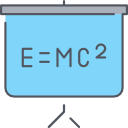
Skripsi
KOMBINASI ARSITEKTUR VGG DAN DENSE CONNECTED (DENSENET) PADA MODEL CONVOLUTIONAL NEURAL NETWORK UNTUK SEGMENTASI PEMBULUH DARAH CITRA RETINA
Penilaian
0,0
dari 5The addition of layers to the U-Net architecture will cause more parameters and increase network complexity. The Visual Geometry Group (VGG) architecture has the ability to overcome these problems by using a small convolution filter. To overcome excessive feature learning in VGG, Dense Connected (DenseNet) can be used by directly connecting each layer using input from the previous feature map. In this study, we will combine the advantages of VGG and DenseNet in overcoming the shortcomings of the U-Net architecture for segmenting retinal blood vessels. The results of this study obtained an accuracy value of 95.23%, sensitivity of 79.54%, specificity of 97.52%, F1 Score of 80.95%, and Intersection over Union (IoU) of 68% using the DRIVE dataset. From these results it can be concluded that the proposed architecture has succeeded in segmenting retinal blood vessels and predicting the background very well, indicated by the accuracy and specificity values above 90%. In addition, it can predict retinal blood vessels quite well, seen from the sensitivity value above 70%, and the balance between the sensitivity and specificity values is good, seen from the F1 Score value above 80%, but the similarity between the image segmentation results and ground truth is still not good seen from the IoU value below 70%.
Availability
| Inventory Code | Barcode | Call Number | Location | Status |
|---|---|---|---|---|
| 2107003404 | T56092 | T560922021 | Central Library (Referens) | Available but not for loan - Not for Loan |
Detail Information
- Series Title
-
-
- Call Number
-
T560922021
- Publisher
- Indralaya : Prodi Ilmu Matematika, Fakultas Matematika dan Ilmu Pengetahuan Alam., 2021
- Collation
-
xii, 70 hlm,: ilus.; 29 cm
- Language
-
Indonesia
- ISBN/ISSN
-
-
- Classification
-
511.807
- Content Type
-
Text
- Media Type
-
-
- Carrier Type
-
-
- Edition
-
-
- Subject(s)
- Specific Detail Info
-
-
- Statement of Responsibility
-
MURZ
Other version/related
No other version available
File Attachment
Comments
You must be logged in to post a comment
 Computer Science, Information & General Works
Computer Science, Information & General Works  Philosophy & Psychology
Philosophy & Psychology  Religion
Religion  Social Sciences
Social Sciences  Language
Language  Pure Science
Pure Science  Applied Sciences
Applied Sciences  Art & Recreation
Art & Recreation  Literature
Literature  History & Geography
History & Geography